Discover the magic of Renaissance flowers through Daniel Rabel’s iconic illustrations. Travel back to the 17th century and download these botanical gems for free!
Today, we’re going back to the heart of the Renaissance, with its myriad artistic wonders and scientific curiosities.
When you hear the term “Renaissance”, your mind might drift to famous artists like Leonardo da Vinci or Michelangelo.
However, among these art world giants, many unsung heroes fused art and science in the most unexpected places. One such gem is the enchanting world of “Renaissance flowers”. Brought to life by the talented Daniel Rabel in his book “Theatrum Florae.”
A Blooming Marvel of the 17th Century
Published in 1627, “Theatrum Florae” is a botanical spectacle, presenting flowers from across the globe with scientific accuracy and sheer artistic beauty.
Imagine the thrill of a botanist or a flower enthusiast from the 17th century, seeing a flower from a distant land for the first time! Rabel’s work was more than just a book—it was a bridge between worlds, connecting different continents through the shared love for nature’s beauty.

Why “Renaissance Flowers”?
You might wonder why we’re using the term “renaissance flowers” to describe the illustrations in this book. A profound revival in art, culture, and knowledge marked the Renaissance. Rabel’s floral depictions epitomize this spirit.
He wasn’t just drawing flowers but capturing the essence of an era where boundaries between disciplines blurred. Science intertwined with art and the limits of what was known expanded rapidly.
Other Renaissance Work To Explore
- Joris Hoefnagel (1542–1600) was a renowned Renaissance artist known for his detailed nature illustrations. He is celebrated for his work on “Mira Calligraphiae Monumenta,” a blend of calligraphy and intricate miniatures of flora and fauna.
- Maria Sibylla Merian‘s insects (1647-1717): One of the most renowned early entomologists, Merian painted insects along with the plants on which they lived and fed. Her book “Metamorphosis insectorum Surinamensium” is particularly famous.
- Mark Catesby (1683-1749): An English naturalist who travelled to the American colonies and documented flora and fauna. His work “The Natural History of Carolina, Florida, and the Bahama Islands” was groundbreaking.
Downloading The Renaissance Florals
To access the high-resolution flora images from “Theatrum Florae,” click the title above. A new window will showcase the vintage floral print in greater detail. To print or save, click directly on the image.
Immerse yourself in the beauty of Renaissance flowers. Incorporate them into your artwork, use them for academic reference, or admire the meticulous precision with which Rabel captured each detail.
All the following vintage floral prints are from the “Theatrum Florae“, who’s full title translates as
A theatre of flowers in which the most beautiful and most wonderful flowers selected from all over the world are brought forth as if from the bosom of the goddess herself.
by Rabel, Daniel
Renaissance Floral Prints 1 to 6
The Crown Imperial (Fritillaria imperialis) is a tall, ornamental flower known for its downward-hanging, bell-shaped blooms in red, yellow, or orange, topped with a leafy “crown.”
Native to areas from Anatolia to the Himalayan foothills, its unique appearance has associations with royalty. While it boasts a regal look, its distinctive scent, reminiscent of wet fur, is believed to repel rodents.
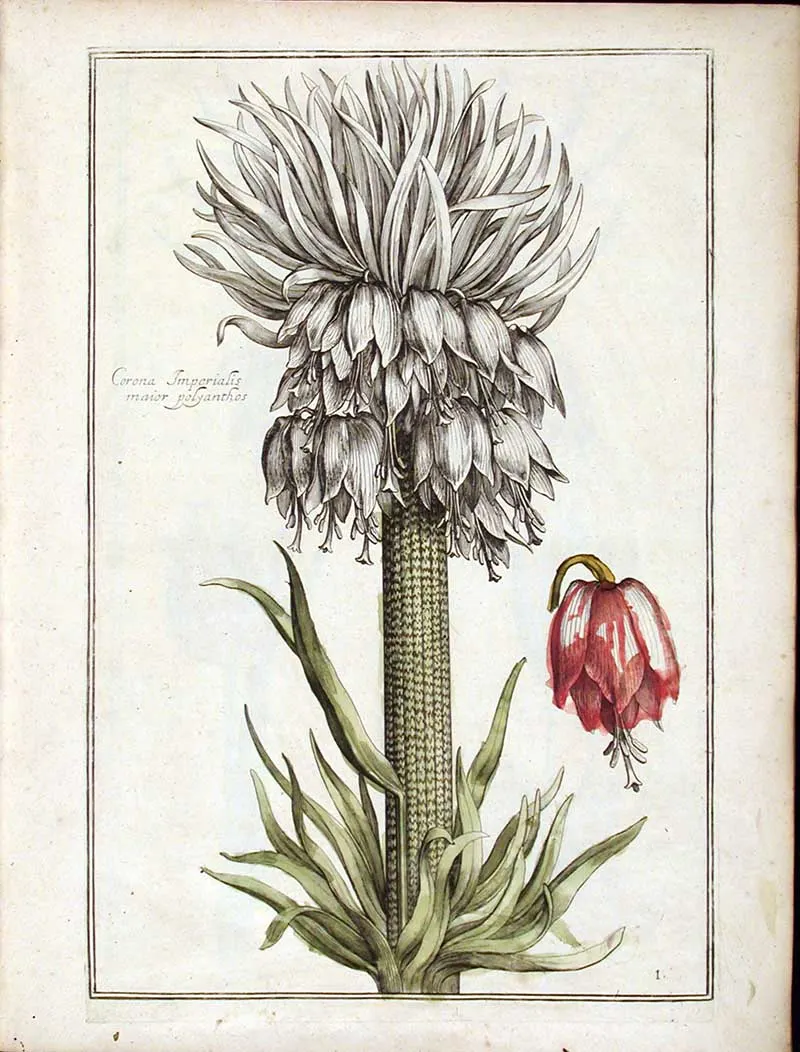
Print 2: Pink Crown Imperial & Tulips
Pink variety of crown imperial and two varieties of bicolour tulips.

Check out these other botanical lily illustrations.
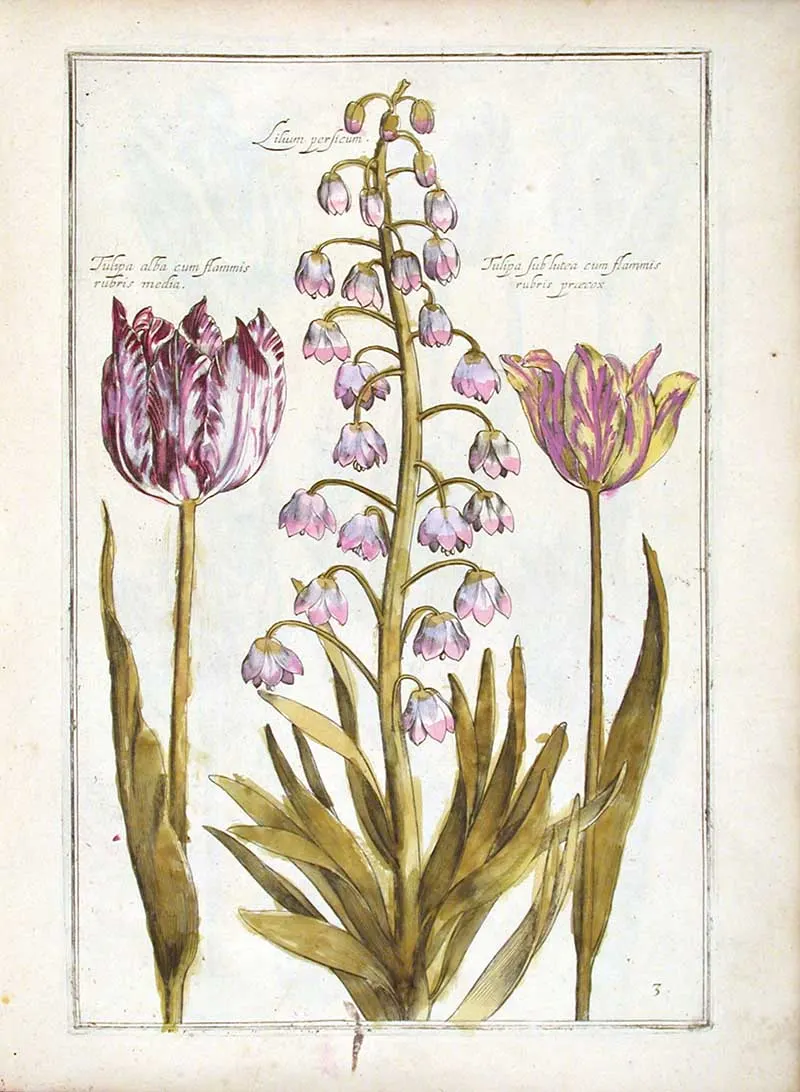
The tulip paintings in “Theatrum Florae” are a testament to the era’s fascination with these exotic blooms. Rabel’s meticulous attention to detail captures the tulip’s elegance, revealing its rich hues and intricate petal formations.
These illustrations showcase the artist’s skill and echo the tulip mania that swept Europe during the period.


A red Narcissus flower painting with a moth.

Renaissance Floral Prints 7 to 12
Print 7: Narcissus Juncifolius
More commonly known as rush daffodils, they are recognizable by their clusters of tubular blossoms and slender, rush-like leaves. This narcissus species has been celebrated in horticulture and literature for its delicate beauty and sweet scent.

Print 8: Hyacinthus orientalis
Commonly known as the common hyacinth, it is a perennial plant native to the eastern Mediterranean. Its dense spike of fragrant, bell-shaped flowers ranging from deep blue and purple to white and pink, it’s a springtime favourite in gardens worldwide.
The intoxicating scent and vibrant hyacinth blooms have long inspired poets and have become symbolic of rebirth and new beginnings in various cultures.

Lilium martagon, often referred to as the Turk’s cap lily, is a captivating flower with a touch of wild elegance.
Its distinctive, downward-facing blooms, adorned with a whirl of recurved petals and speckled patterns, dance gracefully atop tall stems, making it a mesmerizing sight in any garden or woodland setting.
With its unique form and rich history, this enchanting lily truly stands out as a natural work of art.

Hemerocallis more commonly known as day lily.

Several varieties of crocus flowers and a colourful butterfly.
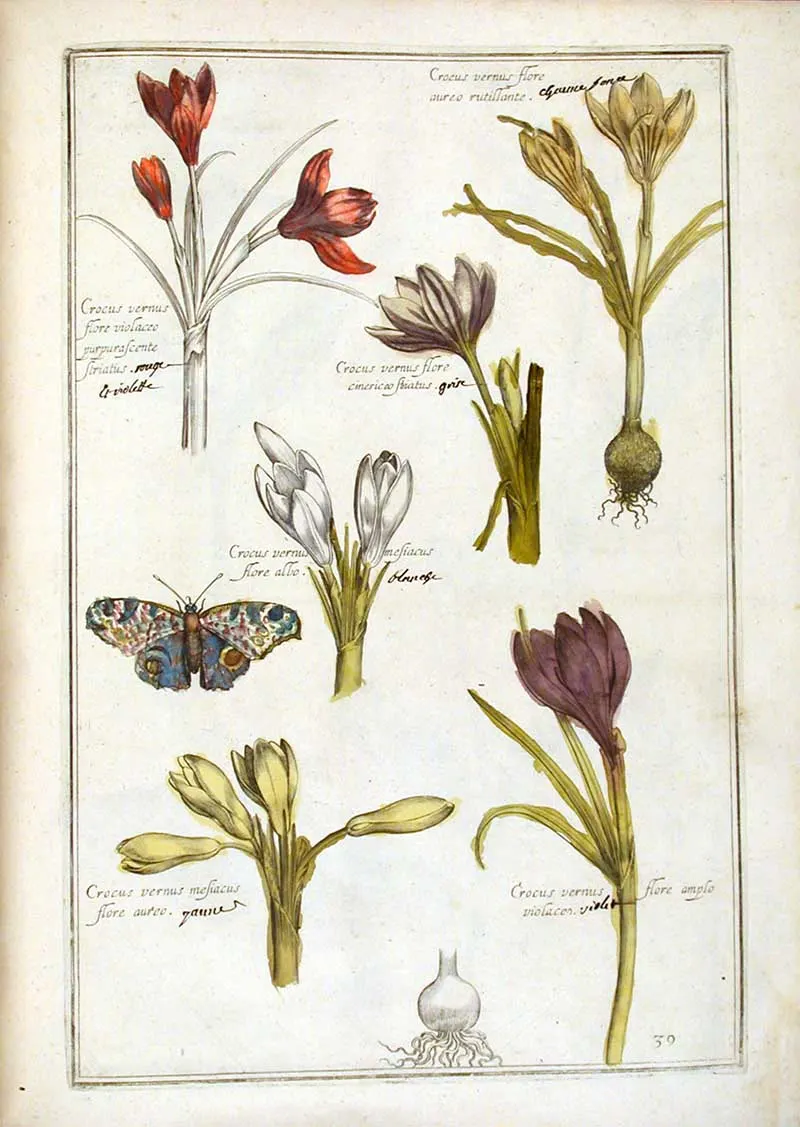
Print 12: Dog Tooth Violets & Moth
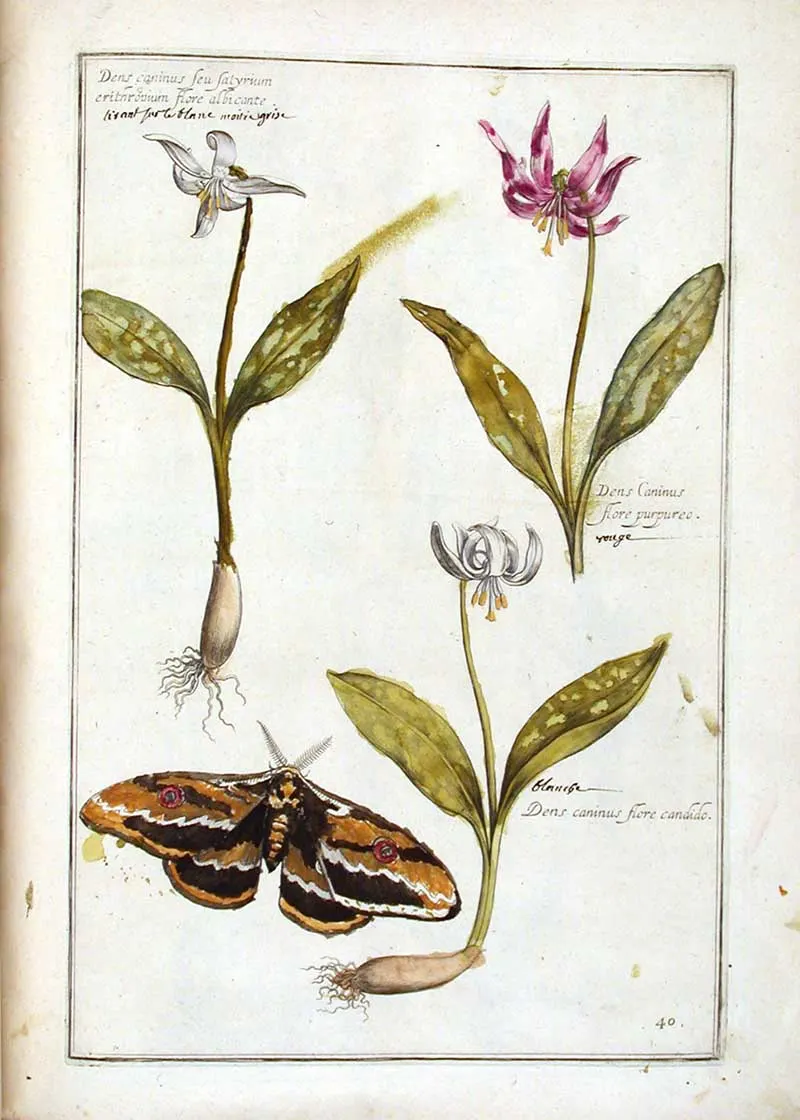
Theatrum Florae Prints 13-20
Gladioli, with their sword-shaped leaves and tall spikes of vibrant, funnel-shaped flowers, are a striking presence in any garden. Often referred to as “sword lilies,” gladioli symbolize strength, integrity, and occasionally, remembrance.
Their diverse colour palette, ranging from bold reds and yellows to soft pastels, makes them a favoured choice for garden displays and floral arrangements.
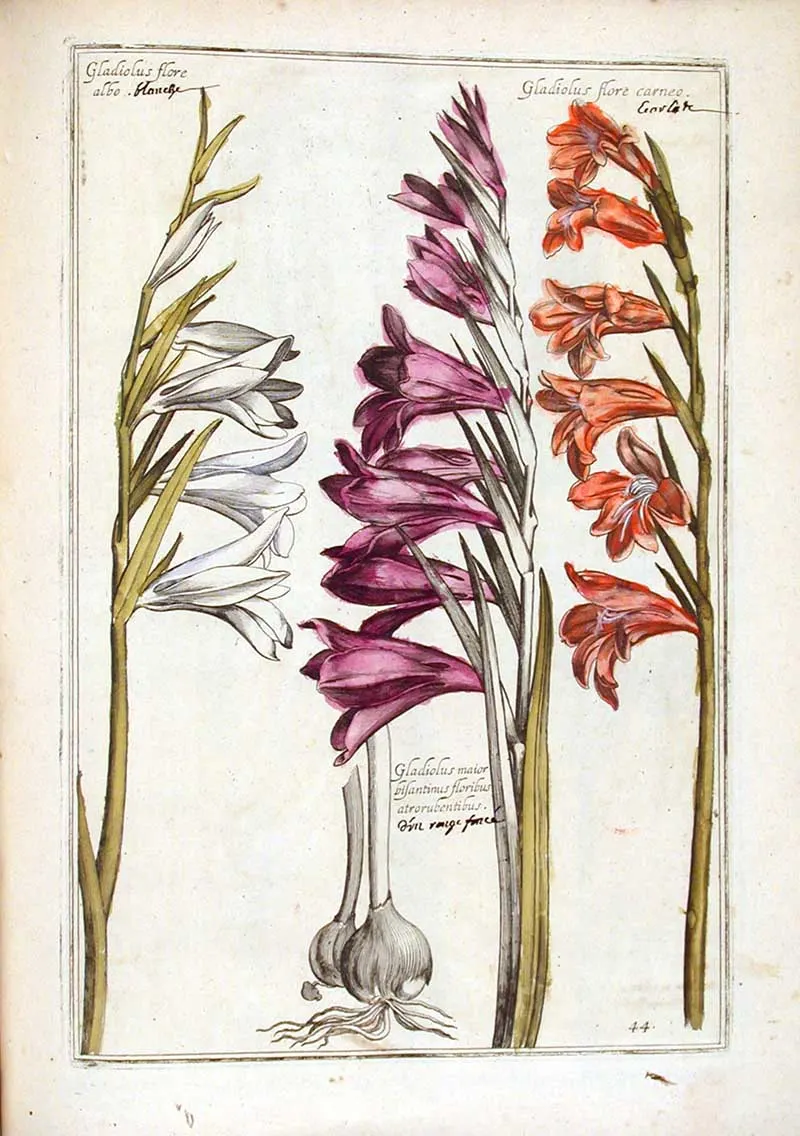
Iris susiana, commonly known as the morning iris, is a unique and visually arresting flower. Native to the Middle East, its petals are adorned with intricate, feather-like patterns in dark charcoal grey, often set against a lighter background, lending it an ethereal, almost parchment-like appearance.
This mesmerizing contrast has made the morning iris a cherished specimen among iris enthusiasts and gardeners. If you are a fan of irises, then check out the beautiful Japanese Iris paintings.
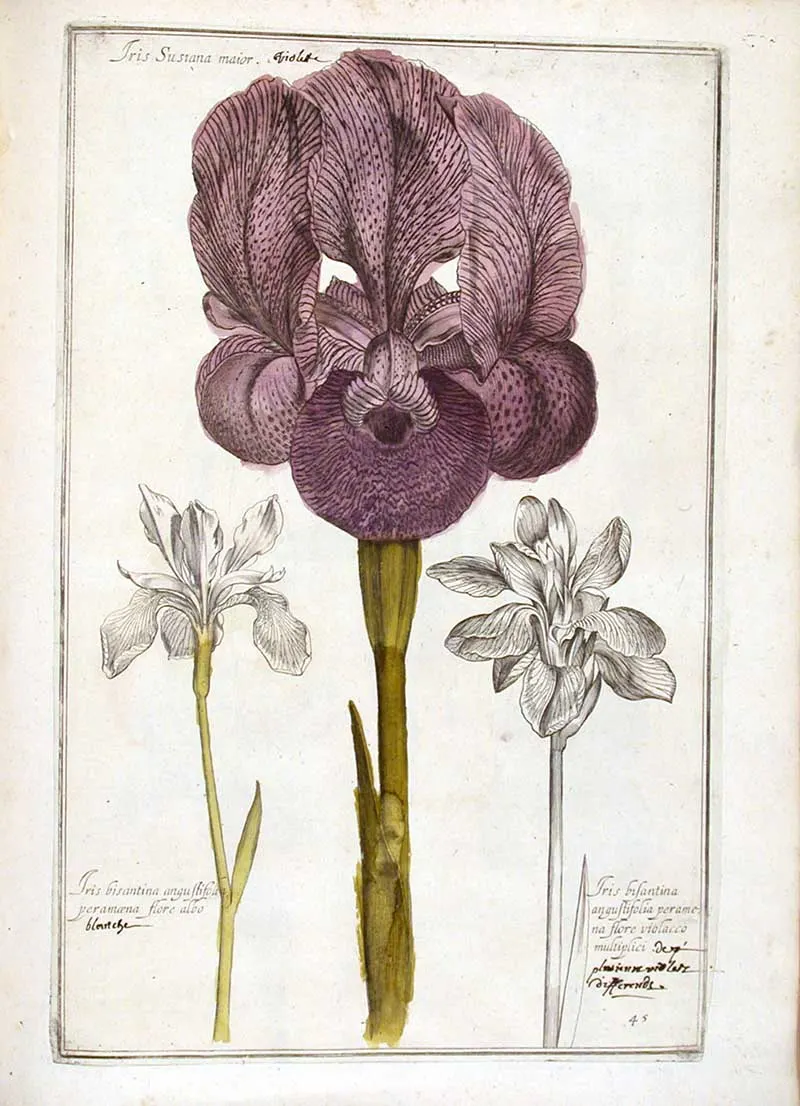
Anemones, commonly known as “windflowers,” are enchanting springtime perennials. Their petals, ranging from pristine whites to rich purples, unfold in a delicate cup-like embrace, brightening gardens and forests alike.
Beyond their visual allure, anemones carry a symbolic weight of hope and anticipation, making them a cherished choice for many floral aficionados.

Check out these other vintage rose botanical illustrations.

Carnations, with their ruffled, voluminous petals and long-lasting blooms, have been a favorite in floral arrangements for centuries.
Known for their rich symbolism, they often represent love, admiration, and distinction.

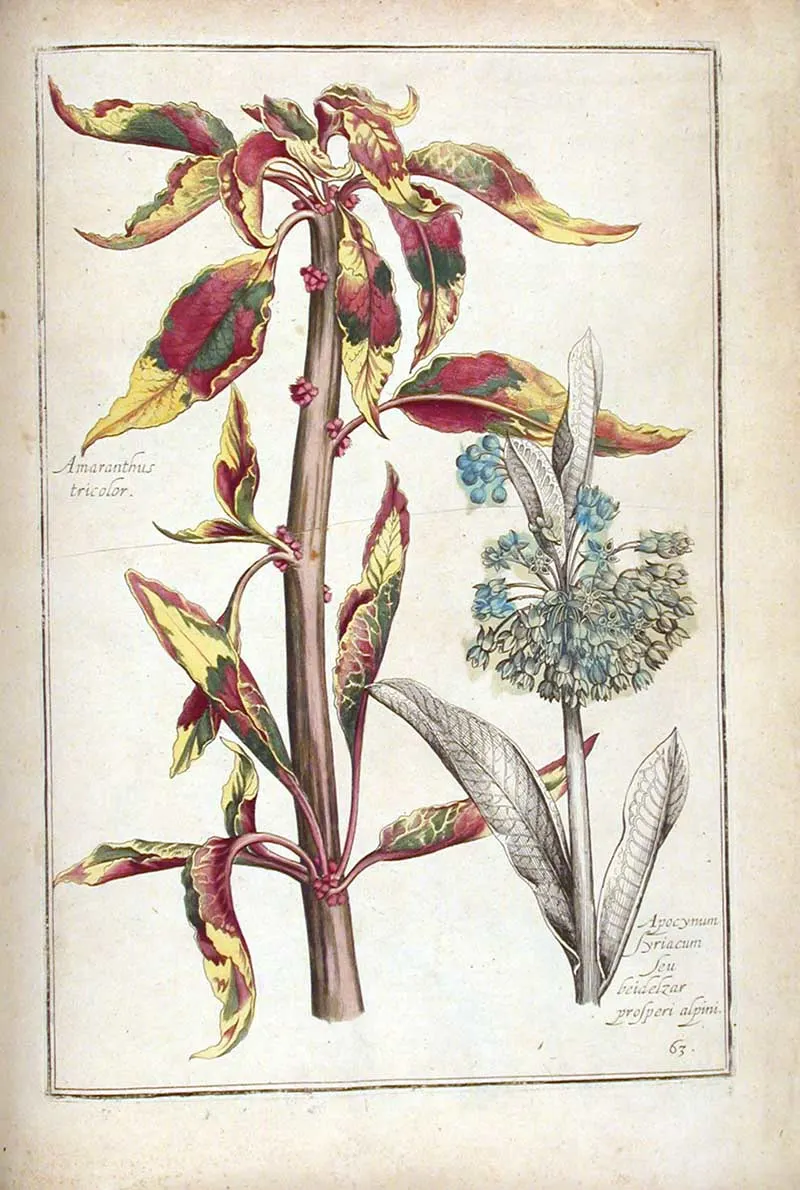
Hellebores, often referred to as “winter roses” or “Christmas roses,” are cherished for their ability to bloom during the chilliest months, bringing color and hope to wintry gardens.
With their nodding, cup-shaped flowers that come in shades from deep purples and greens to soft pinks and whites, they offer a serene beauty that contrasts strikingly with the barrenness of their blooming season, making them a symbol of resilience and renewal.


Other Related Vintage Botanicals
For more Renaissance flowers, check out Henry Fletcher’s 12 months of flowers. Many of these Renaissance flower prints are of bulbous blooms. Check out the beautiful Jane Loudon prints featuring vintage, bulbous flowers.
Consider exploring the still-life flowers of the Dutch Masters. Though crafted during the Baroque period, following the Renaissance, their profound realism and rich symbolism resonate powerfully in the annals of art history.
Alexander Marshall (c. 1620 – 1682) was an English botanical artist known for his detailed illustrations of plants painted in the Baroque period, which followed the Renaissance.
If you plan to use these beautiful flower illustrations for crafts and DIYs, check out how to print on watercolour paper and all these fabulous botanical craft ideas.
If you fancy, you can Buy Me A Coffee Here.
